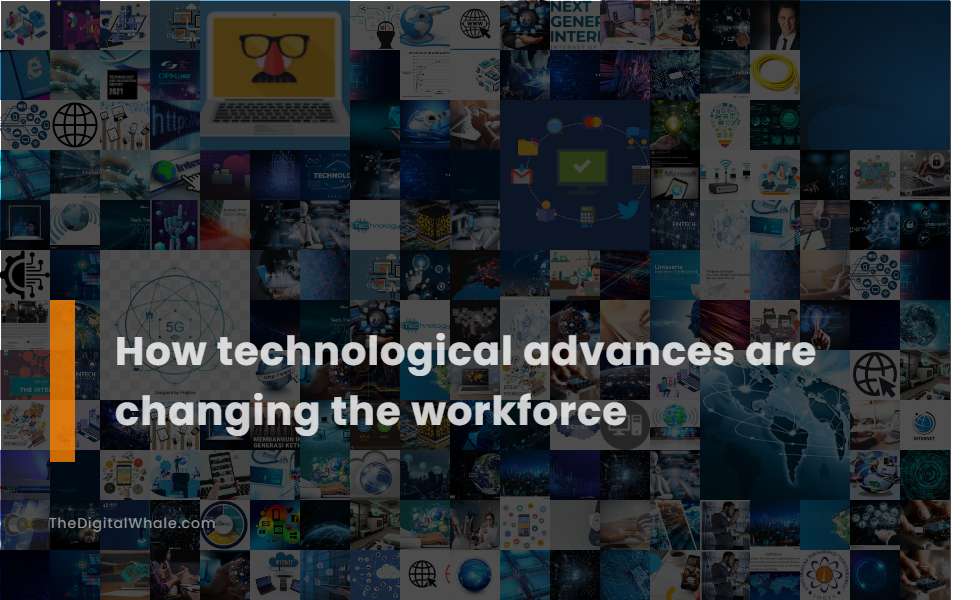How Technological Advances Are Changing the Workforce
What are some of the biggest changes in the workforce that have been brought about by technology? How has technology changed the way businesses operate? Let's find out more about How Technological Advances Are Changing the Workforce.

Automation of Routine Tasks: Many routine manual and cognitive tasks are being automated, replacing workers.
Technological advances are automating routine manual and cognitive tasks, replacing workers in areas such as recruitment, onboarding, time and attendance tracking, and payroll administration, thereby increasing efficiency, accuracy, and productivity, while freeing employees to focus on more strategic and creative aspects of their work. For more insights on this topic, visit Workforce Automation, where you can learn more about how these innovations are transforming industries.
Creation of New Job Categories: New technologies are creating new non-routine cognitive and social tasks, leading to new job categories.
New technologies are creating new non-routine cognitive and social tasks, making work in these areas more productive and leading to the creation of new job categories, such as Machine Learning Engineers, Data Scientists, and Automation Specialists. Additionally, they are increasing demand for skills in areas like AI, big data, and telecommunications. To delve deeper into these developments and understand the implications on workforce dynamics, check out the insightful article on New Technology Changing Job Design.
Shift in Skill Demand: There is an increasing demand for high-skilled technical and analytic work, while the need for basic data processing and manual labor declines.
Technological advances are causing a substantial shift in skill demand, emphasizing high-skilled technical and analytic work. As automation and AI become more prevalent, the need for routine and manual labor continuously declines. An increasing demand for expertise in digital literacy, data analytics, and AI skills can be observed, aligning with the prediction that these competencies will become essential. This phenomenon is not isolated and reflects a broader, long-term trend where traditional roles, such as switchboard operators and grocery store clerks, are being gradually replaced by automated systems. For further insights into how these Technological Advancements are altering the labor market landscape, more information is available online, exploring the impacts on job requirements and remuneration as industries adapt to these changes.
Impact on Job Roles: Traditional job roles are evolving, with a focus on tasks that are difficult to automate, such as data analysis and strategic planning.
Technological advances are transforming traditional job roles, shifting the focus from manual and repetitive tasks to more complex and strategic work such as data analysis, strategic planning, and digital skills. Driven by technologies like AI, automation, and cloud computing, these advancements are reducing the need for routine mechanized work and increasing demand for high-skilled technical and analytic roles. Workers must adapt and acquire new skills to remain relevant in this evolving landscape. As noted on the Cogent Info website, preparing your workforce for the future is crucial to harnessing these technological advancements efficiently.
Remote and Flexible Work: Technological advances are driving the rise of remote work and flexible schedules, requiring employees to be adaptable and tech-savvy.
Technological advances, including fast internet, high-performance hardware, and specialized software tools like communication platforms (e.g., Zoom, Slack) and collaboration software (e.g., Google Workspace), are enabling the rise of remote work and flexible schedules. This shift allows for increased productivity, cost savings, and a better work-life balance, while also requiring employees to be adaptable and tech-savvy to navigate the new work environment. For more insights into the evolving nature of work, visit Customer Think to explore the future of remote work and technology.
Related:
What are the different benefits of using a mobile device in the workplace? What are some benefits of using mobile technology in the modern workplace? Let's find out more about The Role of Mobile Technology In the Workplace.
Need for Continuous Learning: Organizations must foster a culture of continuous learning to help employees upskill and reskill in response to technological changes.
In today's rapidly evolving technological landscape, organizations must foster a culture of continuous learning to empower employees to upskill and reskill effectively. As digital transformation demands a workforce proficient in emerging technologies like AI, cloud computing, and data analytics, it is imperative for employees to stay relevant and adapt to evolving job requirements. According to insights from Psico SMART, continuous learning plays a pivotal role in enabling employees to acquire essential digital skills and remain competitive in the changing job market, which faces the potential displacement of millions of jobs due to technological advancements by 2025.
Polarization of Labor Markets: Technological changes are leading to wage inequality, with higher pay for high-skill workers and fewer, lower-paid jobs for middle-skill workers.
Technological advances are polarizing labor markets by automating routine manual and cognitive tasks, reducing demand for middle-skill workers and increasing wage inequality, while creating more productive and higher-paying jobs for high-skill workers and new opportunities in non-routine cognitive and social tasks. The digitalization of the workforce has further led to labor market polarization, with a significant wage premium for digital skills, resulting in higher pay for high-skill workers. This dynamic is exacerbating the pay and prosperity gaps between high-digital and low-digital occupations. For more insights on how new technology is changing job design, you can visit the article on IZA World of Labor.
Increased Productivity: Technology is enhancing productivity by complementing employees in certain tasks and creating new opportunities for innovation and collaboration.
Technological advances are significantly enhancing productivity by automating repetitive tasks, allowing employees to focus on more meaningful contributions, and enabling greater flexibility and collaboration through tools like cloud computing, AI, and remote work solutions. These new technologies are increasing productivity by complementing employees in non-routine cognitive and social tasks, creating new jobs, and improving the quality and innovation of work processes. As highlighted in the article on Job Design, they also streamline operations by substituting for employees in certain tasks, which helps to reduce variability and enhance overall efficiency in the modern workplace.
Changing Workplace Dynamics: Tools like Zoom, Microsoft Teams, and Slack are essential for maintaining productivity and connection in a distributed workforce.
Technological advances are significantly changing workplace dynamics, particularly with the rise of Remote Work, where tools like Zoom, Microsoft Teams, and Slack are crucial for maintaining productivity and connection in a distributed workforce. These advancements are enabling smoother communication, collaboration, and effective management of remote teams. For further insights on preparing your workforce for this digital transformation, explore more on Digital Transformation at Cogentinfo.
Importance of Soft Skills: Alongside technical skills, soft skills such as problem-solving, teamwork, and leadership are becoming more crucial in a digitally transformed environment.
In today's digitally transformed environment, possessing soft skills like communication, teamwork, adaptability, and problem-solving is crucial alongside technical prowess. These skills drive innovation, enhance career growth, and complement technical expertise, making them indispensable in the modern workplace. The digital age demands professionals who can not only adapt to technological advancements but also foster effective collaboration and leadership within their teams. As highlighted on the AdvantEdge Training website, these skills are essential for achieving professional success and boosting organizational productivity, ensuring that individuals and enterprises thrive in an ever-evolving landscape.
Related:
What are the benefits of using cloud computing services? What are the three big public cloud computing platforms? Let's find out more about How To Make the Most of Cloud Computing In Your Career.
